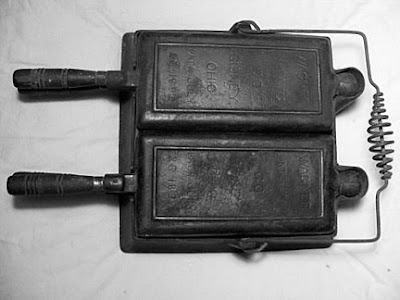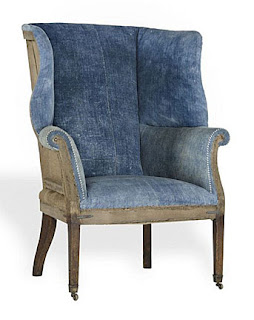 QUESTION: I’ve always enjoyed gardening. I guess I inherited that gene from my father. Every year, he would wait impatiently for the first of the season seed catalogs to arrive. As a kid, I loved paging through them to see the lavish illustrations of all kinds of flowers and vegetables. As I got older, I began helping my father choose the seeds to plant for the summer growing season. Now as an adult with my own family, I’m carrying on the tradition with my own children and garden in our backyard. I never considered collecting seed catalogs until after my father died, and I helped my mother sort through lots of old things. I came across some of dad’s old seed catalogs and brought them home with me. But honestly, I have no idea which of them is collectible. Can you offer some history of seed catalogs and which ones might be the best to collect?
QUESTION: I’ve always enjoyed gardening. I guess I inherited that gene from my father. Every year, he would wait impatiently for the first of the season seed catalogs to arrive. As a kid, I loved paging through them to see the lavish illustrations of all kinds of flowers and vegetables. As I got older, I began helping my father choose the seeds to plant for the summer growing season. Now as an adult with my own family, I’m carrying on the tradition with my own children and garden in our backyard. I never considered collecting seed catalogs until after my father died, and I helped my mother sort through lots of old things. I came across some of dad’s old seed catalogs and brought them home with me. But honestly, I have no idea which of them is collectible. Can you offer some history of seed catalogs and which ones might be the best to collect?
ANSWER: Seed catalogs are the botanical equivalent of a dream book—a grower’s wish list. The most interesting, quirky, art-filled seed catalogs are from the early 1900s.
The hand-drawn and painted, romanticized illustrations and resplendent plant descriptions made them equal parts information and entertainment while offering gardeners plants for their upcoming summer season.
 The first known garden catalog appeared over 400 years ago at the 1612 Frankfurt Fair with the distribution of the bulb catalog, Florilegium Amplissimum et Selectissimum, by Dutch grower Emmanual Sweerts. The catalog contained 560 hand-tinted images of flowering bulbs, giving gardeners a glimpse of possibilities for their own gardens.
The first known garden catalog appeared over 400 years ago at the 1612 Frankfurt Fair with the distribution of the bulb catalog, Florilegium Amplissimum et Selectissimum, by Dutch grower Emmanual Sweerts. The catalog contained 560 hand-tinted images of flowering bulbs, giving gardeners a glimpse of possibilities for their own gardens.
Many of the illustrations originated in botanical publications, useful for identifying plants and noting their medicinal uses, but this new publication distributed to fair-goers was a first to present bulbs for sale. Sweerts died in 1612—the same year the catalog first appeared in print—but it was reprinted for many years to come, right into the Tulipmania period in Dutch history.
Long before the soil warms, the first weeds sprout, and good intentions give way to busy summers, these gems tempt gardeners with visions of ‘candy-sweet’ corn, crunchy cucumbers, and perfectly plump tomatoes.
 It seems that gardening enthusiasts have been drooling over seed catalogs for a long time. Prior to his publication, other plant catalogs listed ornamental species growing in the private gardens of the rich and famous.
It seems that gardening enthusiasts have been drooling over seed catalogs for a long time. Prior to his publication, other plant catalogs listed ornamental species growing in the private gardens of the rich and famous.
Wealthy Europeans had a penchant for collecting ornamental and newly discovered plant species from around the world. Printed catalogs with beautiful engravings depicting these rare botanical possessions helped them show off their status.
A few years after that Dutch catalog, René Morin published the first known French plant catalog in Paris.
 Seed catalogs not only provide a bright spot in winter for the gardener, but they also offer a colorful glimpse into the past.
Seed catalogs not only provide a bright spot in winter for the gardener, but they also offer a colorful glimpse into the past.
Seed catalogs continue to hold a colorful and important pride of place in history, and not just gardening history. These publications offered gardeners an interesting and informative glimpse into the past, so much so that the Smithsonian Institute Libraries contains a collection of about 10,000 seed catalogs dating from 1830 to the present day. The pages of these catalogs reveal not only details about the history of gardening in the U.S., but their text and illustrations also provide a fascinating look at printing, advertising and fashion trends through the years.
 The honor of publishing the first American seed catalog goes to 18th century horticulturist David Landreth. The D. Landreth Seed Company, founded in 1784 in Philadelphia, introduced the zinnia, the white potato, various tomatoes, and Bloomsdale spinach to America, largely through its catalogs.
The honor of publishing the first American seed catalog goes to 18th century horticulturist David Landreth. The D. Landreth Seed Company, founded in 1784 in Philadelphia, introduced the zinnia, the white potato, various tomatoes, and Bloomsdale spinach to America, largely through its catalogs.
As American pioneers moved westward, ordering seed catalogs became an important way to bring fruits, vegetables and flowers with them to their new homes. When the nation's railway system grew and the mail service improved, the seed and nursery trade expanded as well.
After the Civil War, the mail order seed market became quite competitive, and nurseries used their catalogs to announce novelty items such as "Mammoth," "Giant" or "Perfection" varieties of flowers, fruits and vegetables.
 Catalog covers became more elaborate, and catalogs contained more than basic information and began to include more detailed descriptions, testimonials, special offers, contests and awards the nursery’s plants had won at horticultural fairs or exhibitions. For example, Dingee & Conard's 1889 catalog contained a special insert on pink paper that gave a detailed listing of its discounted collection of popular varieties.
Catalog covers became more elaborate, and catalogs contained more than basic information and began to include more detailed descriptions, testimonials, special offers, contests and awards the nursery’s plants had won at horticultural fairs or exhibitions. For example, Dingee & Conard's 1889 catalog contained a special insert on pink paper that gave a detailed listing of its discounted collection of popular varieties.
Boston's Joseph Breck & Company, established in 1818, published its first seed catalog in 1840. Called "The New England Agricultural Warehouse and Seed Store Catalogue," the 84-page publication included illustrations and horticultural details next to product listings. Today the company is called Breck's Bulbs, and it still mails free catalogs to customers.
Seed catalogs have reflected the times. For example, catalogs from 1945 celebrated the end of the World War II with colorful pictures and the advice to settle down and to decorate your home with flowers. Seed producers gave flower varieties victory-related names. The back cover of the Jackson & Perkins catalog in 1945 featured the 'Purple Heart' viola, for instance. In one patriotic display, the 1945 Burpee Seeds catalog depicted a V-For-Victory- shaped red Swiss chard plant surrounded by bomb-like carrots over a tomato shaped like a globe.
 The beauty of seed catalogs comes from their photography and, in earlier examples some cases, their engraving. Even today, companies such as Territorial Seed Company, based in Cottage Grove, Oregon.
The beauty of seed catalogs comes from their photography and, in earlier examples some cases, their engraving. Even today, companies such as Territorial Seed Company, based in Cottage Grove, Oregon.
One of the most well known seed catalogs belongs to W. Atlee Burpee & Company, founded in 1876 by Washington Atlee Burpee in Philadelphia, Pennsylvania, after starting a mail-order chicken business in 1876. The company expanded to selling garden seeds, farm supplies, tools and hogs after customers began asking for seeds they had grown in their native farms.
In 1888, Burpee established the family farm, Fordhook Farm in Doylestown, Pennsylvania, as a family farm and the first experimental test field station in the United States. After he traveled to Europe to collect seeds which needed to be adapted to North American climates, Burpee conducted crop field trials.
 In 1900, distant cousin Luther Burbank visited the farm inspiring him to create his own experiments. He later created additional research stations, including in California in 1909, to test seeds. By the turn of the century, Burpee's had created one of the largest mail and freight businesses of the time.
In 1900, distant cousin Luther Burbank visited the farm inspiring him to create his own experiments. He later created additional research stations, including in California in 1909, to test seeds. By the turn of the century, Burpee's had created one of the largest mail and freight businesses of the time.
By 1915 Burpee was mailing over a million catalogs a year to American gardeners. But that same year, its direction began to change when Atlee’s son, David, inherited the company upon the death of his father. David’s main interest lay in victory gardens, and he became an early promoter of them during World War I. He also prioritized the company’s output in flower seeds and initiated several flower hybridization breeding programs. Burpee geneticists also began to modify the genes of seeds using x-rays and colchicine.
 The advertisements began to include full-color advertising to include Burpee's strengths of reliability of seeds using the motto "Burpee's Seeds Grow" and leader in the industry while the catalog was compact, arranged by category, and easy to find the order form.
The advertisements began to include full-color advertising to include Burpee's strengths of reliability of seeds using the motto "Burpee's Seeds Grow" and leader in the industry while the catalog was compact, arranged by category, and easy to find the order form.
To read more articles on antiques, please visit the Antiques Articles section of my Web site. And to stay up to the minute on antiques and collectibles, please join the over 30,000 readers by following my free online magazine, #TheAntiquesAlmanac. Learn more about "folk art" in the 2023 Winter Edition, online now. And to read daily posts about unique objects from the past and their histories, like the #Antiques and More Collection on Facebook.










































